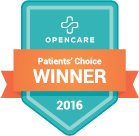With the news that there have been Coronavirus cases confirmed here in Ohio and increased reporting likely to come worldwide, I know there is heightened concern among the community. Here are some additional thoughts. (Please also see my previous info from last week.)
Prevention - The most important thing continues to be basic and powerful precautions.
Wash your hands properly and frequently. Use hand sanitizer when out and about, especially after touching any public area (gas handles, shopping carts, keypads, doors).
Don’t touch things you don’t have to. Think door knobs, light switches, others’ hands and property.
Do not touch your own face (eyes, nose, mouth) with your hands whenever possible. I know we all think we don’t do it, but you’ll be surprised when you start noticing!
Cover your mouth and nose with any cough or sneeze. Do not cover with your hand. Use a tight elbow, inside of your shirt or better yet disposable napkin when possible.
Social distancing - this is not a time to panic, but especially if it makes you feel more comfortable, consider limiting exposures to high risk areas and large unknown groups in particular.
Consider going to stores, movies, gym at “off times” when crowds are less and use precautions.
Go to the doctor when you are sick, but work with your doctor regarding precautionary measures to avoid exposing others. Work with your doctor if you are NOT sick as well to avoid being exposed as much as possible.
Supplies and support - no need to hoard, but if you become ill you will need to stay in your home for 14 days, so anything you need for that amount of time should be easily available to you. Know what your support plan (people, places, things) would be for your entire family if anyone has to be home.
Why is this such a big deal? Isn’t it just like the flu?
Similar to the flu in that they BOTH are a BIG deal.
Similar to the flu in that the young and healthy are the most likely to do well (most likely, but not always).
Similar to the flu in that the overall mortality rate is considered low (but it is looking like perhaps double the flu and more than double within certain populations).
Similar to the flu in that basic hygiene and precautions are necessary to limit spread.
DIFFERENT than the flu in that the rate of people needing hospitalization and respiratory support seems to be much higher. In my opinion, this is the main reason for drastic prevention measures. If left unchecked the number of people needing hospital beds, oxygen, ventilators, etc. will overwhelm the system as it stands now. We need to slow the spread.
DIFFERENT than most flu in that this is a new virus strain so we don’t have natural specific immunity to it and we don’t have a vaccine to help gain that.
DIFFERENT than the flu in that we don’t have antiviral drugs that are known to be effective at this point (though some are being tried in severe cases with mixed results and study is being done quickly).
DIFFERENT than the flu in that the mortality rate is decently higher for elderly and those with underlying medical conditions. And remember, even if the rate is “low”- say 2% (and it seems to be much higher for certain groups), can you imagine sitting in your church, school, parent’s senior living community, sporting event and being aware that 2 out of each hundred people die from this and up to 20% need hospitalized? That’s why EVERYONE should be willing to participate in slowing the spread.
What changes has my practice made? Some reminders about how our practice is specifically positioned to help during this time...
We always follow standard hygiene and sanitation practices, but we have ramped these up as usual over heavy sickness times.
We are available for virtual visits (phone or video chat) for anyone who needs triaged (should I come in or not?) and for new issues and follow up discussions that don't require a physical exam. Many of our visits can be safely conducted virtually! Don’t hesitate to ask.
We ask that all patients tell us up front if they are having any ill symptoms and any known exposures, so that we can plan accordingly.
We are doing our best to separate office visits so that it is more likely for you to not encounter anyone waiting (much less anyone will ill symptoms).
We encourage patients to arrive on-time for appointments (not too early - not too late). Unexpected arrivals increase exposures.
Everyone with respiratory symptoms will be offered hand sanitizer and a mask/tissues to cover their face. We ask that patients proactively come with face covered (scarf even), with tissues and be aware of appropriately covering their cough/sneeze and not touching things unnecessarily.
Everyone with ill/respiratory symptoms will be treated promptly and safely.
So bottom line...do not panic. (Remember stress is bad for your immune system after all.)
DO be aware and cautious. Don’t blow this off as a conspiracy theory, a political stunt, something that you shouldn’t have to worry about.
AND by all means, if this tuckers out quickly (which we are hopeful it can IF drastic prevention measures are taken), the take home message is not “oh they made a big deal about nothing.” When the wildfires are put out quickly, it’s not because “they made a big deal about nothing,” it’s because a team of well-trained professionals gathered together and did their best to contain the situation and everyone around them supported their advice wholeheartedly.
Be well,
Dr. Paige


